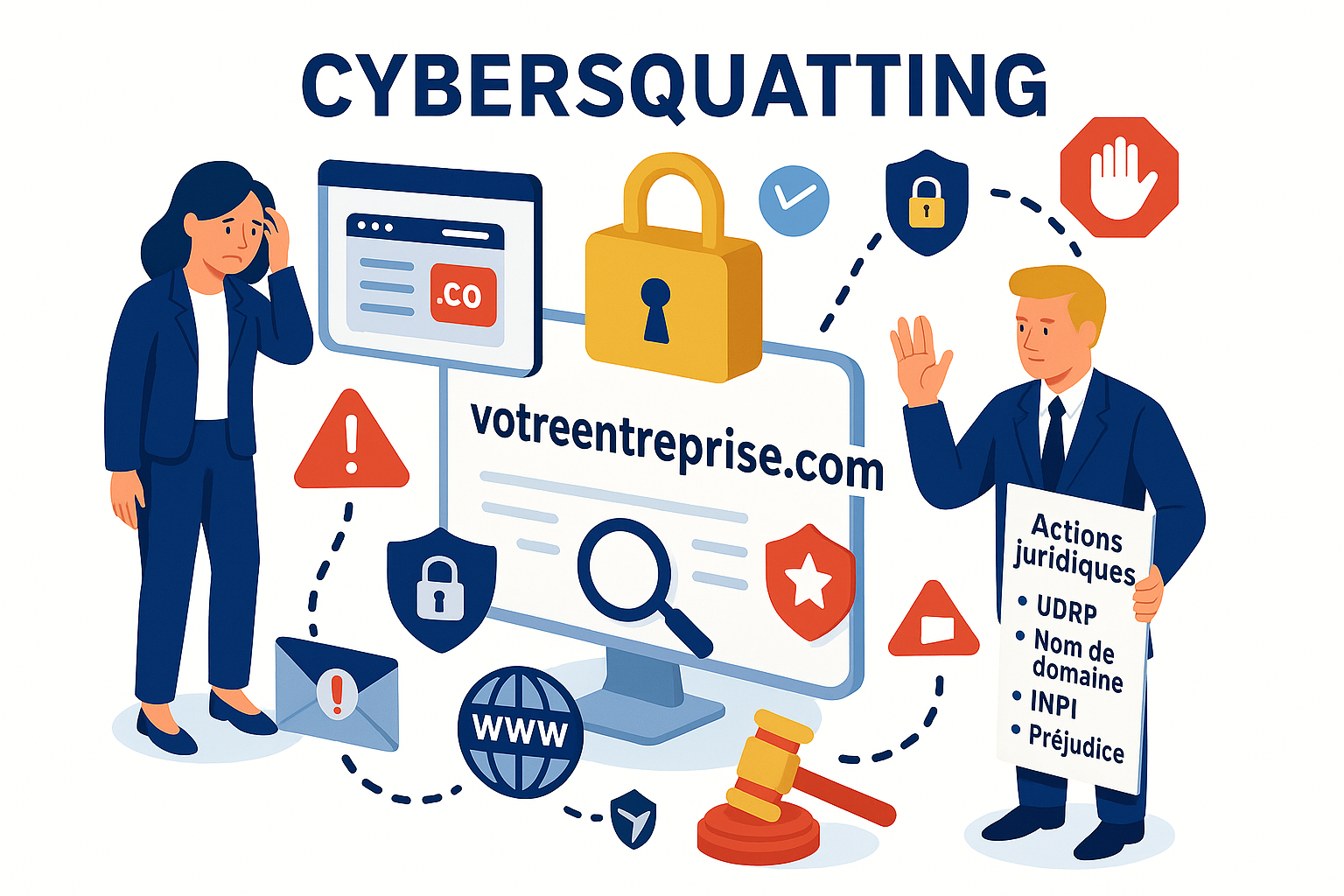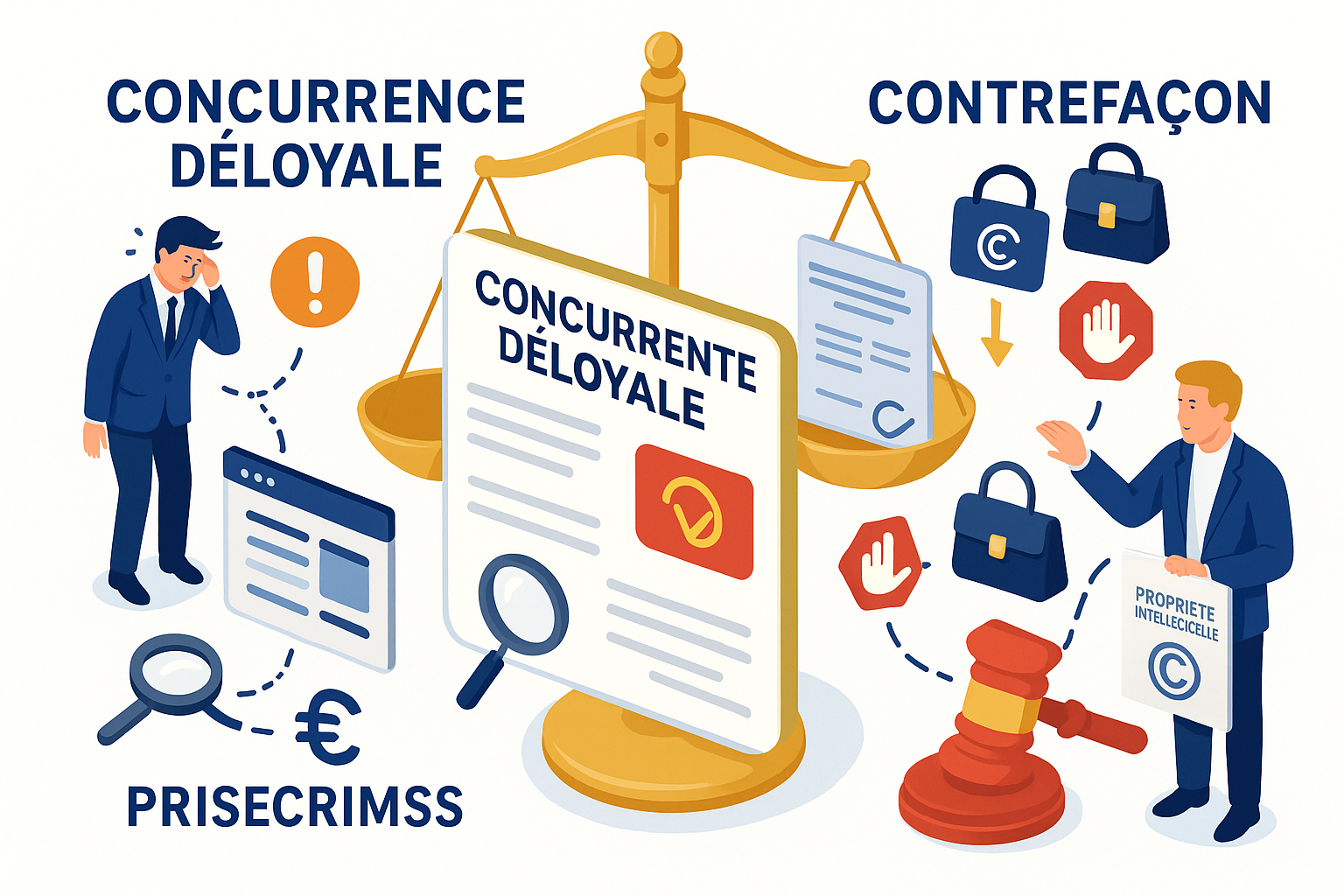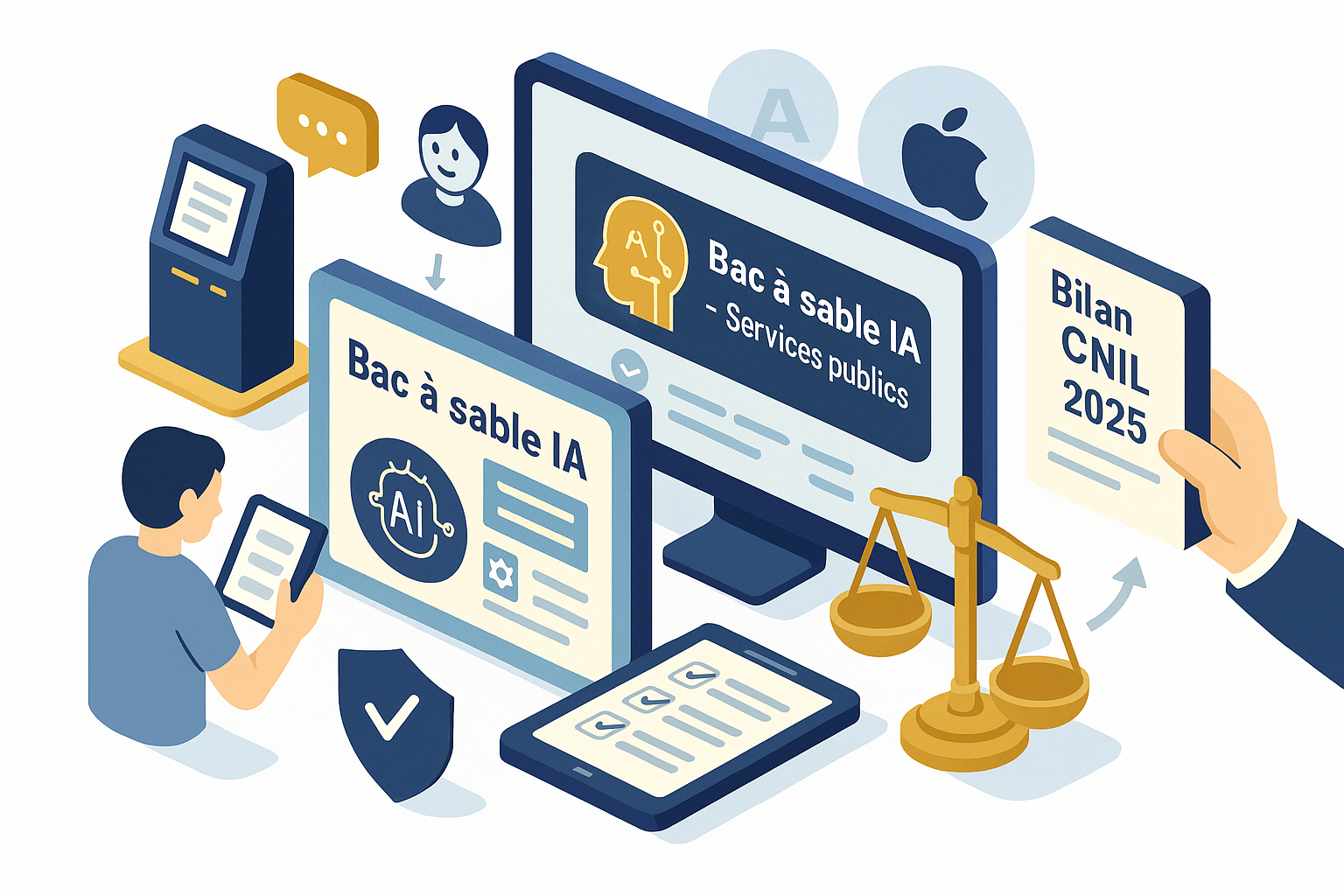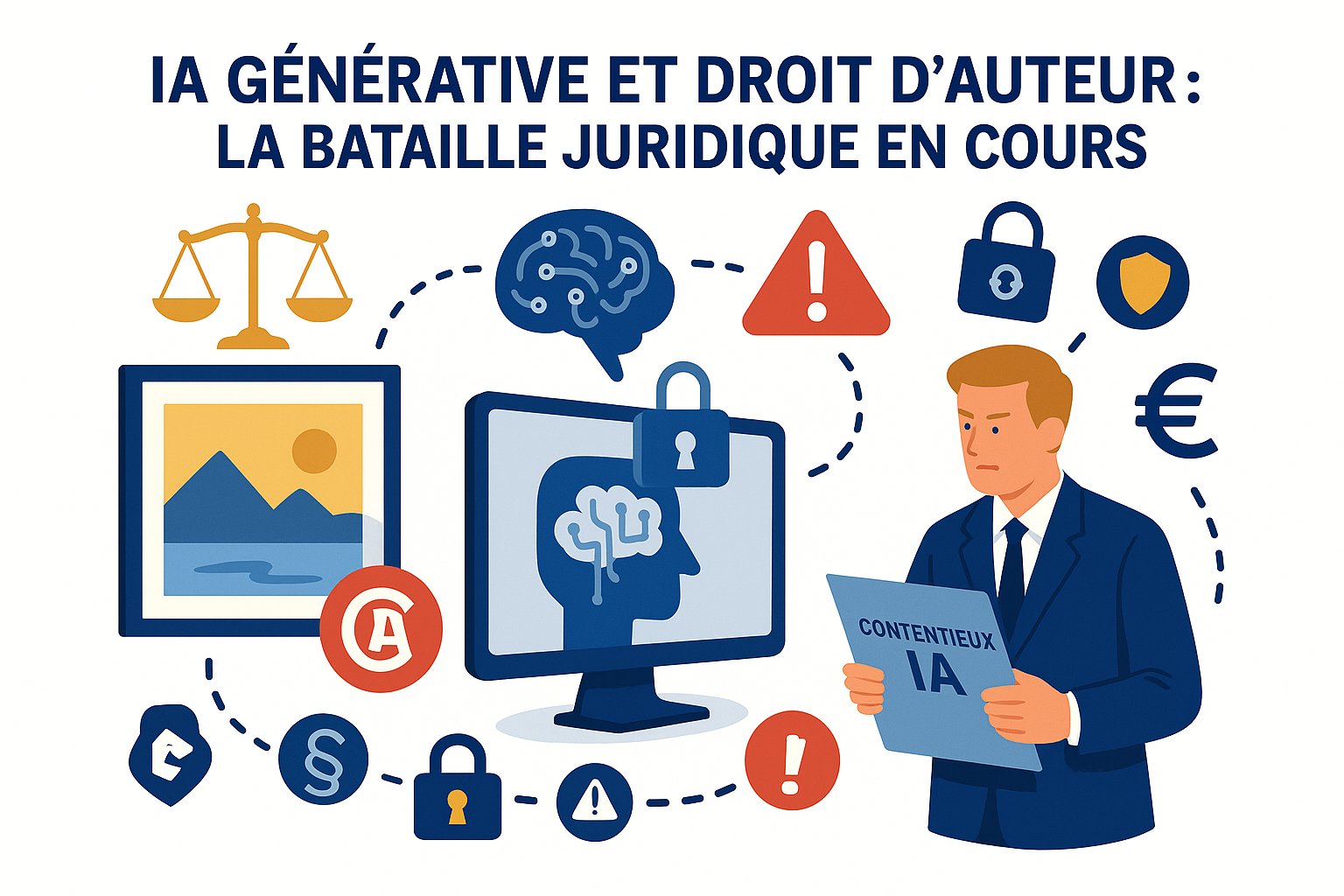In the digital ecosystem of 2025, a company's online presence has become its main point of contact with customers and partners.
At the heart of this presence is the domain name, a true digital address and a fundamental element of brand identity.
Unfortunately, this growing importance has also made domain names a prime target for a fast-growing malicious practice: cybersquatting.
If you need a domain name protection lawyer, contact me!
The evolution of cybersquatting in 2025
Cybersquatting is no longer the relatively simple practice of a few years ago, consisting simply of registering a domain name corresponding to a brand in the hope of reselling it at a premium. In 2025, it has become a sophisticated activity, carried out by organized players who deploy complex strategies to exploit brand awareness for their own profit.
Spoofing techniques have become considerably more sophisticated. Cybersquatters no longer content themselves with registering names identical to trademarks, but now target typographical variants, alternative extensions, or even combinations associating a trademark with descriptive or geographical terms. The arrival of new extensions has multiplied the possibilities for usurpation, forcing companies to monitor a much wider spectrum of potentially problematic names.
Even more worryingly, artificial intelligence is now being used to systematically identify vulnerable brands and automatically generate variations of domain names likely to attract traffic. These systems can detect emerging brands at their earliest successes and corner the associated domain names before entrepreneurs have even had time to secure their online presence.
Concrete risks for your company
The consequences of cybersquatting for a company go far beyond the simple loss of a domain name. Loss of traffic is often the first visible impact: customers looking to find you online may be redirected to competitor or fraudulent sites, resulting in an immediate drop in your audience and conversions.
Even more seriously,damage to reputation can cause lasting damage. Cybersquatted sites often mimic the appearance of the official site while offering inferior content, counterfeit products or even scams of all kinds. Consumers, thinking they are interacting with your brand, will associate this bad experience with your company, destroying the trust they have patiently built up.
Customer confusion is also a major problem. With so many sites appearing to represent your brand, consumers may find it difficult to identify the official site, fragmenting your audience and diluting your message. This confusion can also affect your communications, marketing campaigns and even customer services.
The sectors most affected
While no sector is totally spared from cybersquatting, certain areas are particularly targeted due to their attractiveness to fraudsters. The luxury goods sector remains a prime target, with brand values and high product prices providing fertile ground for counterfeiters and swindlers.
The financial sector is also experiencing an upsurge in attacks, with cybersquatters creating sites imitating those of banks and payment services to steal sensitive information. Innovative technologies and start-ups are being targeted from the outset of their successes, often before they have been able to put in place an adequate protection strategy.
E-commerce is particularly vulnerable, with fraudulent sites replicating the appearance of legitimate stores to intercept payments or collect personal data. A domain name attorney can help you develop an appropriate defense strategy against these specific threats, combining proactive monitoring, defensive registrations and rapid recovery procedures in the event of usurpation.
The sophisticated techniques of cybersquatters
Spoofing tactics have become considerably more sophisticated in recent years. Typosquatting, which involves registering names with common typos (such as amazno.com instead of amazon.com), remains a widespread practice, but has become more sophisticated with the use of predictive algorithms that identify the most likely errors for each brand.
Combosquatting involves associating a brand name with descriptive or geographical terms (such as amazon-france-soldes.com) to create plausible names likely to attract traffic. Cybersquatters also exploit new domain extensions to create variants such as amazon.shop or amazon.store, which appear legitimate to consumers.
More recently, homograph squatting uses visually similar characters from different alphabets to create identical-looking but technically different domain names. This particularly pernicious technique is virtually undetectable to the average user, making the fraud all the more effective.
Legal and financial consequences
Beyond the direct loss of revenue and audience, cybersquatting can have significant legal consequences for all parties involved. Legitimate trademark owners now have a stronger legal arsenal at their disposal to combat these practices, with penalties that have been considerably tightened.
Financial penalties can reach several hundred thousand euros in the most serious cases, particularly when the usurpation is accompanied by fraudulent practices such as counterfeiting or phishing. Cybersquatters may also be held civilly liable for damage caused to the brand, paving the way for substantial compensation claims.
In some cases, criminal proceedings may be brought, particularly when cybersquatting is part of a wider strategy of organized fraud or counterfeiting. These growing legal risks reflect the authorities' growing awareness of the scale and seriousness of the phenomenon.
Effective protection strategies
In the face of these constantly evolving threats, companies need to adopt a proactive, multi-dimensional approach. Domain name monitoring is the first pillar of any effective protection strategy. Automated tools can now rapidly detect any suspicious registrations similar to your brand, facilitating early intervention before the damage becomes significant.
Defensive registrations remain an essential strategy, involving the pre-emptive acquisition of the main variants and extensions of your domain name. While this approach may not cover all possibilities, it does secure the most obvious configurations, and therefore those most likely to be targeted.
Legal intelligence is also essential to keep abreast of regulatory and case law developments in the domain name field. Dispute resolution procedures such as WIPO's UDRP (Uniform Domain-Name Dispute-Resolution Policy) or SYRELI for .fr domains are constantly evolving, offering increasingly effective means of redress for trademark holders.
Act quickly in the event of usurpation
When a case of cybersquatting is detected, swift action is crucial to limit the damage. The first step is usually to document the infringement by collecting evidence of the misuse of the domain name and of your prior rights to the trademark concerned.
A formal formal notice is often the first official step, informing the cybersquatter that his activity has been detected and that he is liable to prosecution. In many cases, this simple step can be enough to obtain the retrocession of the domain name, particularly when it comes from a law firm.
If this approach fails to produce results, alternative dispute resolution procedures such as the UDRP offer a faster, less costly route than conventional legal proceedings. These mechanisms, specifically designed to deal with cybersquatting cases, generally enable a decision to be reached within a few months.
In the most serious or complex situations, particularly where fraudulent activities are associated with cybersquatting, legal action may be necessary. Although these procedures are longer and more costly, they enable us to obtain fuller redress and more severe penalties against offenders.
Legal expertise: your best defense
With the growing complexity of cybersquatting and the legal mechanisms for dealing with it, expert support has become indispensable. A lawyer has the technical and legal knowledge needed to develop a strategy tailored to your specific situation and maximize your chances of success.
Legal expertise is particularly valuable when developing your preventive strategy, enabling you to identify the risks specific to your sector and put in place the appropriate protection. It is also decisive in the management of usurpation cases, where the construction of solid arguments and mastery of procedures largely determine the outcome of litigation.
In a digital environment where traditional borders are becoming increasingly blurred, the international dimension of cybersquatting adds a further layer of complexity. A lawyer familiar with international procedures and regulations will be able to guide you effectively through this legal maze, ensuring that your rights are protected on a global scale.
Towards integrated digital protection
Cybersquatting is no longer an isolated phenomenon, but is now part of the wider ecosystem of digital threats facing businesses. A truly effective approach must therefore integrate domain name protection into an overall cybersecurity and intangible asset management strategy.
This holistic vision implies close collaboration between the company's legal, IT and marketing teams. Raising employee awareness of domain name risks and best practices is also a key element in preventing incidents and reacting effectively when they do occur.
Technology is playing an increasingly important role in this integrated approach, with automated monitoring and artificial intelligence solutions enabling early detection of usurpation attempts. These tools, combined with solid legal expertise, form the basis for effective, long-term protection of your digital identity.
Be proactive to preserve your digital capital
In a world where the value of companies is increasingly based on their intangible assets, the protection of digital identity has become a major strategic issue. As the main point of entry to your digital ecosystem, the domain name deserves attention and protection commensurate with its crucial importance.
Companies that adopt a proactive approach, combining constant monitoring, defensive registrations and specialized legal expertise, give themselves the means to effectively preserve their digital capital in the face of growing threats. This vigilance is no longer a luxury, but a necessity in an environment where reputation and trust are decisive competitive assets.
Faced with the ingenuity and perseverance of cybersquatters, the best defense remains an anticipatory strategy, firmly rooted in a thorough understanding of the technical and legal issues at stake. Your domain name is too precious to be left unprotected in the digital jungle of 2025.




